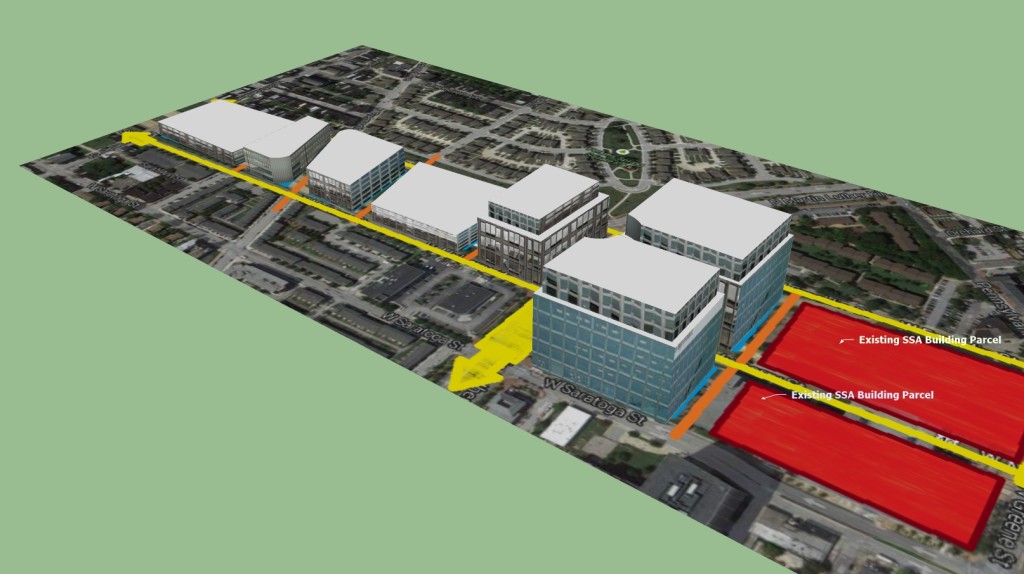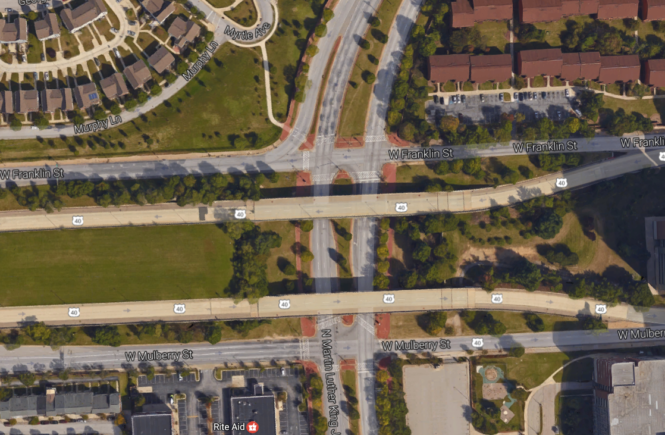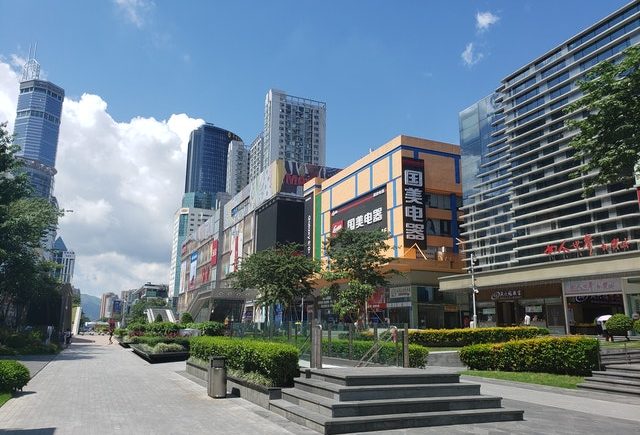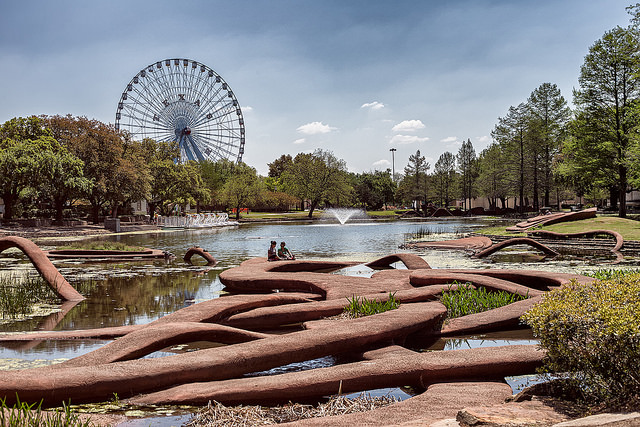I’m currently living in Miami, but much of my formative hands-on planning education took place in Baltimore. Baltimore has an incredible array of assets, including historic neighborhoods, great architecture and a world famous waterfront. Urban renewal took its tool on the city, however, and the freeways adjacent to Baltimore’s downtown are a reminder of grand, top-down planning initiatives which did far more harm than good in the mid 20th century. The area where US 40 (“The Highway to Nowhere“) and MLK Jr. Blvd intersect is an example of how high-capacity street networks can reduce the utility of the land around them. This area was known as the Metro West complex and housed the Social Security Administration which vacated the area a couple of years ago, leaving an 11 acre site on the edge of downtown Baltimore open for redevelopment. The relocation offers an opportunity to reimagine an important link between West Baltimore and downtown. Currently, the Metro West site is a no mans land of suburban style office buildings with poor street interaction framed by high capacity roads. While the office buildings can easily be demolished or repurposed, the biggest site challenge is the street network.
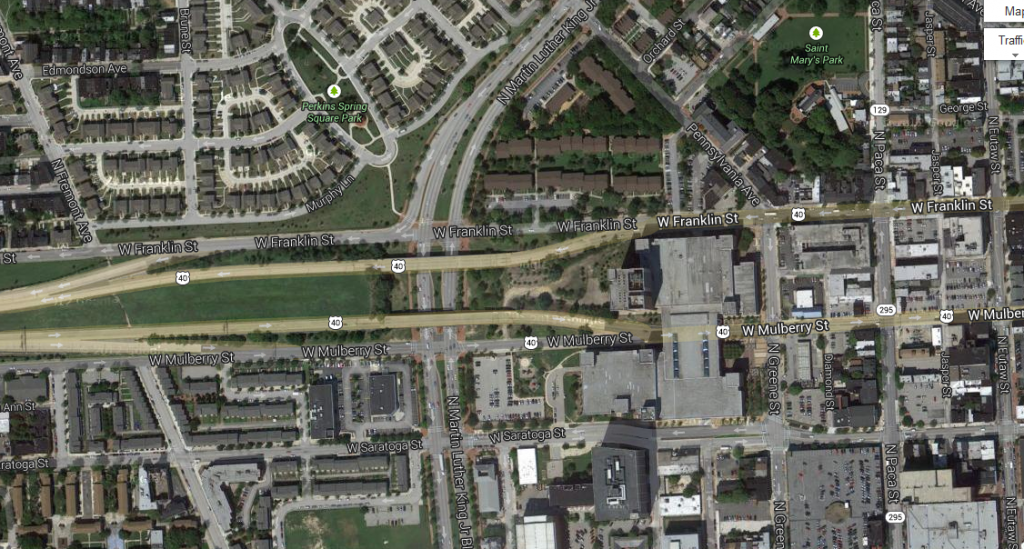
Baltimore’s Highway to Nowhere and MLK Jr. Blvd both act as border vacuums making access to Metro West difficult for pedestrians, cyclists, and even drivers. Construction of US 40 in the mid 20th century demolished dense urban blocks, creating major barriers between West Baltimore neighborhoods. The highway access ramps between US 40 and Franklin/Mulberry Streets also make infill projects difficult, if not impossible. While it may not seem like it, the entire area is one big superblock. Creative work arounds are possible, but to get the most human-scaled development potential out of this project, we should get rid of the site constraint entirely by demolishing the 2 most eastern blocks of US40 while reconnecting the original street grid throughout the area. Since the western two blocks of US 40 have already been demolished and are currently being repurposed as MARC Station parking (with plans for future TOD), consider this plan a compliment to the West Baltimore MARC project and a logical right sizing of an under capacity network.
Because US 40 also divided the street network, reconnecting these streets is an important first step in a Metro West site plan. Demolishing both highway access ramps up to Schroeder St., reconnecting the two halves of Fremont and creating new local streets at Poppleton, Brune, and one bisecting the Metro West site will result in 7 new development sites (shown in blue below). The grade difference between US 40 and adjacent blocks east of Fremont is minimal, so expensive highway caps won’t be needed as they would be west of Schroeder Street. Franklin and Mulberry, presently high speed traffic arteries, can be reimagined as more pedestrian friendly streets to create solid pedestrian and cycling routes from both sides of the site. MLK Jr. Blvd, a high speed arterial, can undergo an incremental right-sizing with widened medians and bumpouts to improve pedestrian comfort and safety. The existing Metro West buildings (in red) would now be part of a more intact urban space with better site access. Reconnected neighborhoods and new development potential to the west would also leverage whatever public or private investment occurs at Metro West.

Demolishing highways and building new streets is expensive, but the potential for urban, mixed use development projects on these newly created infill sites would pay dividends, especially for the West Baltimore communities which were divided during US 40 construction. US 40 right of way is currently contributing nothing towards Baltimore’s revenue stream and constitutes a blighting influence on a significant area of the city. The existing street network around Metro West is the major impediment to livability for area neighborhoods. Fixing the network is the first and primary step in creating a world class Metro West redevelopment project and helping to revitalize downtown in the process.
